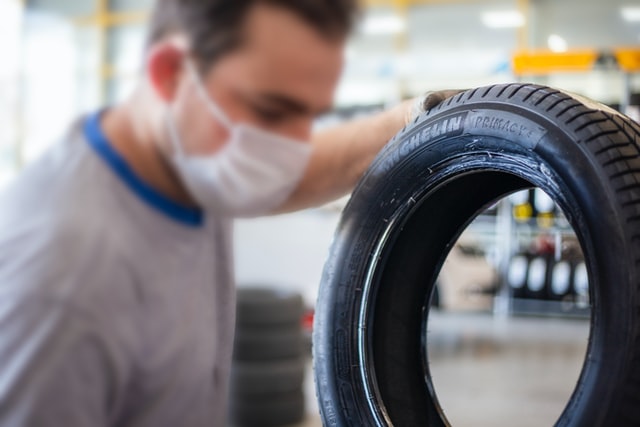Potholes, glass, nails, and other road dangers are almost always unavoidable. However, there are three major causes of tyre issues that may be avoided: insufficient inflation pressure, excessive speeding, and overloading. Preventing them will result in safer driving and longer tyre life.
Under- or over-inflated tyres can reduce tyre life, as well as driving performance, comfort, handling, and braking. Excessive bending of the tyre casing occurs when it is underinflated, resulting in overheating, increased rolling resistance, and premature wear.
Underinflation can harm tyres in extreme circumstances. Overinflation can also shorten tyre life, impair grip, cause uneven wear, and put undue strain on your vehicle’s suspension components.
High-speed driving is more likely to damage tyres than low-speed driving. When a vehicle makes contact with a road danger, the risk of tyre damage increases. Speeding causes a higher build-up of heat in the rubber, which can damage the tyre and increase its wear rate.
If the tyres are not properly maintained, it can also lead to abrupt tyre disintegration and air loss. An accident can occur if a driver fails to maintain control of a vehicle when a tyre loses air. If you see any damage to a tyre or wheel, replace it right away with your spare, then get it examined by a tyre professional at Smart Mechanics is Stansted and Smart Mechanics in Bishop Stortford.
Check the load index of your tyres, which can be located on the sidewall, to make sure they aren’t overloaded. Relative to this load index, do not exceed the load capacity. Excessive heat can build up in tyres that have been loaded above their maximum load capacity, resulting in tyre failure. It is always suggested to Follow the loading instructions provided by your manufacturer as well.
Any axle on your vehicle should not exceed its maximum axle load rating. The recommended tyre pressure and load capacity for your tyres may be found on the tyre placard on most cars. Because air bears the whole weight of the vehicle and its occupants, proper inflation pressure is critical to the tyre’s integrity and the car’s safe handling.
The ability of the tyre to absorb road shocks is reduced when it is overinflated, resulting in a considerably rougher ride. Excessive overinflation, in fact, can result in casing failures such as impact fracture. Excessive wear of the tyre’s centre can also be caused by over-inflation. The tyre will be removed too soon as a result. Inflation pressures should be checked on the tyre placard.
When the tyres are cold, pressures should be checked at least once a month. When your tyres are heated from driving, you should never lower the air pressure since pressures will naturally rise. After you’ve checked the pressures, make sure you replace the valve caps, as they’re the main seal. Only use metal valve caps for the greatest seal.
The most common cause of tyre damage is under inflation. Underinflation produces excessive flexing in the tyre, which traps heat inside the casing and weakens it over time. It’ll also result in uneven tread wear and fast shoulder wear. Inflation pressures should be checked on the tyre placard.
What Is the Recommended Tire Pressure?
The recommended tyre pressure and load capacity of your tyres may be found on the tyre placard on most vehicles. The front driver’s door pillar is generally where you’ll find this. The clove box, under the gasoline flap, beneath the hood around the radiator support, or next to the car’s identifying plaque are some of the other possibilities.
To get the greatest performance and wear out of your tyres, contact the professionals at Car Mechanics in Bishops Stortford and Car Mechanics in Stansted for advice on the proper pressure for your driving circumstances and load.


